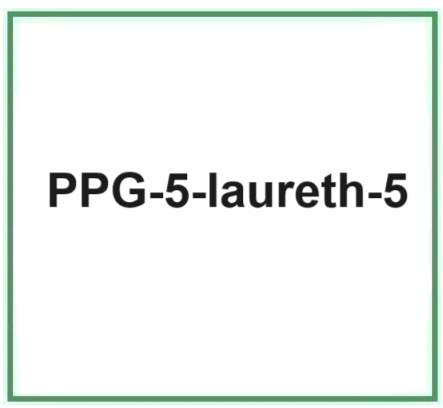PPG-5-laureth-5 is a chemical compound, polypropylene glycol (PPG) ethoxylated ether of lauryl alcohol.
The name describes the structure of the molecule
- PPG indicates the presence of polypropylene glycol units.
- 5 represents the number of propylene oxide (PO) units in the molecule.
- Laureth indicates the presence of a laureth chain as part of the structure.
Raw materials used in production
- Polypropylene Glycols (PPG) - PPGs are a class of polymers that form the basis of the molecule. They contribute to the chemical structure and properties of the emulsifying agent.
- Propylene Oxide (PO) - Propylene oxide is used for the synthesis of PPGs and determines the number of PO units in the molecule.
- Laureth Chain - The laureth chain is a group of hydrocarbons that binds the PPGs and influences the emulsifying and detergent properties of the compound.
- Lauryl Alcohol - Lauryl alcohol is the raw material from which the ether is derived. It is a fatty alcohol derived from coconut oil or palm oil.
- Propylene Oxide Ether - Propylene oxide ethers are produced by reacting propylene oxide with lauryl alcohol, forming the ether bond and creating laureth ether.
Step-by-step summary of industrial chemical synthesis process
- Synthesis of Polypropylene Glycols (PPG) - PPGs are synthesized through a reaction between propylene oxide (PO) and water, followed by the removal of excess water to obtain PPGs.
- Synthesis of Laureth Ether - Propylene oxide ethers are produced by reacting propylene oxide with lauryl alcohol, forming the ether bond and creating laureth ether.
- Purification and Isolation - The resulting compound is purified to remove impurities and isolated in its final form.
Form - PPG-5-laureth-5 is commonly available as a transparent liquid.
Color - It is colorless or may have a slight yellowish tint depending on impurities present in the raw material.
What it is used for and where
Cosmetics
Skin conditioning agent - Emollient. Emollients have the characteristic of enhancing the skin barrier through a source of exogenous lipids that adhere to the skin, improving barrier properties by filling gaps in intercorneocyte clusters to improve hydration while protecting against inflammation. In practice, they have the ability to create a barrier that prevents transepidermal water loss. Emollients are described as degreasing or refreshing additives that improve the lipid content of the upper layers of the skin by preventing degreasing and drying of the skin. The problem with emollients is that many have a strong lipophilic character and are identified as occlusive ingredients; they are oily and fatty materials that remain on the skin surface and reduce transepidermal water loss. In cosmetics, emollients and moisturisers are often considered synonymous with humectants and occlusives.
Surfactant - Emulsifying agent. Emulsions are thermodynamically unstable. Emulsifiers have the property to reduce the oil/water or water/oil interfacial tension, improve emulsion stability and also directly influence the stability, sensory properties and surface tension of sunscreens by modulating their filmometric performance.
Safety
This ingredient is formed by an ethoxylation reaction using ethylene oxide. After the reaction, residues of ethylene oxide and 1,4-dioxane, chemical compounds considered carcinogenic, may remain. At present, no manufacturer is known to provide this information on the label.
Commercial Applications
PPG-5-laureth-5 ethoxylated ether of lauryl alcohol is primarily used in the cosmetics and detergent industry as an emulsifying agent and surfactant. It is used in hair care products, body washes, moisturizing creams, and other products to improve the consistency and stability of emulsions and facilitate the mixing of oily and aqueous ingredients.
![]() PPG-5-laureth-5
PPG-5-laureth-5 

